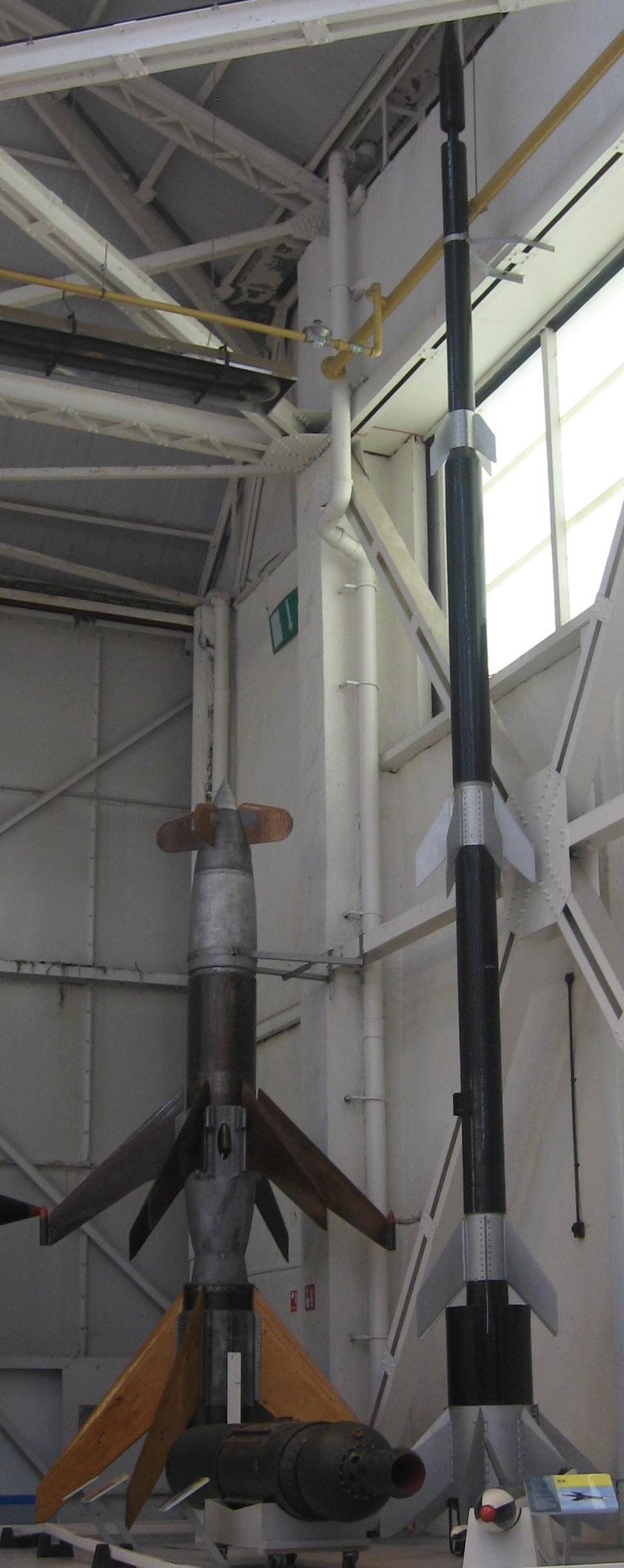Rheinbote on:
[Wikipedia]
[Google]
[Amazon]
 ''Rheinbote'' (''Rhine Messenger'', or V4) was a German short range ballistic rocket developed by
''Rheinbote'' (''Rhine Messenger'', or V4) was a German short range ballistic rocket developed by
 ''Rheinbote'' (''Rhine Messenger'', or V4) was a German short range ballistic rocket developed by
''Rheinbote'' (''Rhine Messenger'', or V4) was a German short range ballistic rocket developed by Rheinmetall
Rheinmetall AG is a German automotive and arms manufacturer, headquartered in Düsseldorf, Germany. Its shares are traded on the Frankfurt stock exchange.
History
Rheinmetall was founded in 1889. Banker and investor Lorenz Zuckermandel
L ...
-Borsig at Berlin
Berlin ( , ) is the capital and largest city of Germany by both area and population. Its 3.7 million inhabitants make it the European Union's most populous city, according to population within city limits. One of Germany's sixteen constitue ...
- Marienfelde during World War II
World War II or the Second World War, often abbreviated as WWII or WW2, was a world war that lasted from 1939 to 1945. It involved the vast majority of the world's countries—including all of the great powers—forming two opposin ...
. It was intended to replace, or at least supplement, large-bore artillery by providing fire support at long ranges in an easily transportable form.
History
One of the problems for the German military, and indeed any mobile military force, is the weight of theartillery
Artillery is a class of heavy military ranged weapons that launch munitions far beyond the range and power of infantry firearms. Early artillery development focused on the ability to breach defensive walls and fortifications during siege ...
and, more importantly, its ammunition supply. Battlefield rockets were intended to circumvent the problems, which led to the development of ''Rheinbote''. The ''Rheinbote'' was the successor of the earlier ''Rheintochter
''Rheintochter'' was a German surface-to-air missile developed by Rheinmetall-Borsig during World War II. Its name comes from the mythical ''Rheintöchter'' (Rhinemaidens) of Richard Wagner's opera series ''Der Ring des Nibelungen''.
The missile ...
'' (Rhine Maiden).
Developed in 1943 by the Rheinmetall-Borsig company, ''Rheinbote'' was a four-stage solid-fuelled rocket, and the only long-range battlefield ballistic missile to enter service in World War II. The first test flights were carried out that year. Several changes were made to the system, but the basic design remained the same. It measured , with fins at the tail and one set of additional fins at each stage.Christopher, p.137. The propellant was a diglycol dinitrate mix, which enabled test models to achieve a speed of , the fastest rocket of the period.
The Rheinbote carried a warhead (just 2.3% of the missile's total weight) to a height of , for an effective range of ; it reached over in testing. For shorter ranges, some of the stages could be removed. It was launched from a simple rail on a mobile trailer, based on the one used to transport the V-2
The V-2 (german: Vergeltungswaffe 2, lit=Retaliation Weapon 2), with the technical name ''Aggregat 4'' (A-4), was the world’s first long-range guided ballistic missile. The missile, powered by a liquid-propellant rocket engine, was developed ...
. It was aimed simply by pointing the trailer and elevating the launch gantry, a method not guaranteed to be accurate.
Over 220 were constructed, with over 200 being used against the Belgian port of Antwerp
Antwerp (; nl, Antwerpen ; french: Anvers ; es, Amberes) is the largest city in Belgium by area at and the capital of Antwerp Province in the Flemish Region. With a population of 520,504,
between November 1944 and the end of the war. They caused only limited damage in small unpredictable areas of the city.Ford, p.84
Some were fired from positions near the town of Nunspeet in the Netherlands.
The concept of long-range artillery rockets on the battlefield would remain undeveloped after the war. Even ''Rheinbote'' was not used in its intended role, but instead as a smaller version of the V-2 missile in the strategic role, for which its warhead was essentially useless due to its poor accuracy, small size, and its fusing, since it tended to bury itself in the ground before exploding.
After the war, the Soviet Union
The Soviet Union,. officially the Union of Soviet Socialist Republics. (USSR),. was a transcontinental country that spanned much of Eurasia from 1922 to 1991. A flagship communist state, it was nominally a federal union of fifteen national ...
seized the design.
Design
The ''Rheinbote'' was a four-stage solid fuel rocket. The slender body measured in at tall and could carry a relatively small payload over a distance of approximately . Each of the four stages fired in succession with the first stage getting the rocket off the ground, the second and third stages lifting it further aloft, and the fourth stage lifting it to its maximum altitude. It was a ballistic missile with relatively low accuracy. Upon detonation the warhead produced no fragment damage and produced a crater no larger than across. The accuracy of the ''Rheinbote'' was found impossible to calculate after tests, because the craters proved too small to find.Characteristics
* Primary function: artillery support * Contractor: Rheinmetall-Borsig * Fuel source: diglycol-dinitrate solid propellant rocket * Length: * Diameter: * Wingspan: * Launch weight: Christopher, p.137, suggests the missile's weight was nearer . * Speed: * Warhead: * Range: (effective); (maximum) * Fuzes: * Unit cost: * Date deployed: November 1944 * Users: GermanySee also
*List of World War II guided missiles of Germany
During World War II, Nazi Germany developed many missile and precision-guided munition systems.
These included the first cruise missile, the first short-range ballistic missile, the first guided surface-to-air missiles, and the first anti-ship mi ...
Notes
Sources
* * * {{V-weapons World War II weapons of Germany Rocket weapons